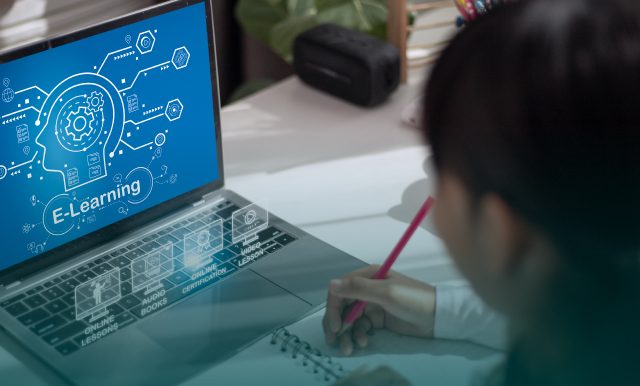Recently, EdTech has revolutionized education. Digital technologies and internet platforms are replacing blackboards and textbooks in some classrooms. This shift has impacted the way students access information, communicate with teachers, assess learning outcomes, and engage with students. Technology makes education more flexible, creative, and accessible, enabling students to learn anytime, anywhere. Digital education is changing the learning landscape, not just a trend.
Learn Anywhere
Access to global learning resources is one of the biggest impacts of EdTech. Online courses, learning apps, and digital textbooks allow students to learn at their pace. EdTech tools remove the geographical and time barriers that rural children and full-time workers face in education. This flexibility is crucial for students who cannot attend formal educational institutions or study offline due to other commitments. Everyone can learn, grow, and achieve their goals online.
Personalized Learning for All Learners
Data-driven EdTech personalizes learning. Unlike traditional classroom teaching, technology can customize learning based on students’ skills, weaknesses, learning progress, and preferences. Artificial intelligence (AI) platforms can assess student performance and suggest improvements. This personalization keeps students engaged and supports their learning. Real-time data on student performance helps teachers provide targeted support. Each student can reach their potential through personalized learning.
Fun Educational Tools
Modern EdTech tools make learning more interactive and fun. Instead of reading or listening, students can now perform simulations, virtual experiments, and educational games. These help students understand abstract concepts. Biology students can explore 3D cell models, while history students can take a virtual tour of ancient civilizations. Rewards, levels, and progress-tracking features encourage students to learn on a gamified learning platform. This level of engagement makes learning fun and intriguing for students.
Collaboration in Connected Learning
Collaboration is essential for learning, and EdTech increases collaboration among students. Online tools provide real-time communication and group assignments for students across geographies. Virtual classrooms, discussion forums, and shared digital workspaces promote collaboration and idea sharing. Digital collaboration is essential in today’s technology-driven society, so students learn it. International educators can share best practices and resources. The digital age makes learning more social, inclusive, and collaborative.
Empowering Education with Technology
EdTech empowers students and teachers. Teachers have access to online lesson plans, assessments, multimedia content, and professional development courses. Technology frees teachers from administrative tasks, allowing them to focus on teaching and interacting with students. Smart assessment, classroom management, and attendance apps simplify daily tasks. Edtech also enables teachers to connect with students through communication and feedback channels. Teachers can leverage technological innovations to enhance learning.
Expanding Education and Promoting Equity
Edtech plays a transformative role in closing educational gaps and promoting equity. Poor students face challenges such as lack of resources, insufficient teachers, and poor-quality education. Edtech offers these students access to digital learning opportunities and creates equal opportunities for them. Affordable tablets, free online courses, and open educational resources make learning more inclusive. Children in special education benefit from tailored assistive technologies. Edtech can bridge the academic gap and give every student the chance to thrive in the digital age.
Educating for the Future Workforce
As the labor market becomes increasingly technology-dependent, it is essential that students learn digital skills early on. Edtech teaches students modern tools, platforms, and problem-solving strategies for the workplace. Coding apps, robotics kits, and STEM platforms provide students with the training they need for STEM jobs. Employers value critical thinking, adaptability, and teamwork, qualities that digital learning fosters. Edtech in the classroom helps prepare students for a rapidly changing, technology-driven world.
AI and Big Data in Education
Education technology is merging with artificial intelligence and big data. AI can assess students in real time, predict learning outcomes, and change learning paths. Data on students’ use of digital platforms reveals what works and what doesn’t. This data can help educators and institutions make decisions about curriculum, instruction, and resource allocation. As AI continues to evolve, it will provide students and teachers with more accurate, tailored solutions and support. Big data and artificial intelligence are transforming education into data-driven learning.
Challenges of Using Education Technology
While education technology has its advantages, it also has its drawbacks. The digital divide exists because not all students have devices or are dependent on the internet. Online systems that collect student data raise questions about privacy and data security. Technology should not replace human interaction, which is essential for learning. Teachers need training and support to integrate technology into the classroom. Schools must carefully select tools that meet the needs and educational goals of students. As we embrace the future of learning, we must address these issues in a smart and ethical manner.
Conclusion
Education technology makes education more accessible, personalized, engaging, and future-proof. It helps teachers, empowers students, and bridges the gap between educational opportunity and equity. As technology continues to evolve, its importance in education will only increase. Technology is making education more accessible and inclusive for students of all ages and backgrounds worldwide. With the right approach, EdTech can improve education and create a smarter, more innovative generation.
FAQs
1. How does EdTech help students?
EdTech offers students personalized learning, interactive content, flexible schedules, and effective learning tools.
2. Can EdTech replace the classroom?
EdTech enhances the classroom, but it doesn’t replace it. It offers new ways to learn but still requires teachers and human interaction.
3. Which EdTech tools find widespread use?
Learning Management Systems (LMS), online courses, educational apps, virtual classrooms, and interactive digital textbooks are all common.
4. Is EdTech suitable for all ages?
EdTech is flexible and offers solutions for preschoolers, college students, and adults.
5. How does EdTech help teachers?
EdTech provides platforms for lesson planning, assessment, student performance tracking, and distance learning.




